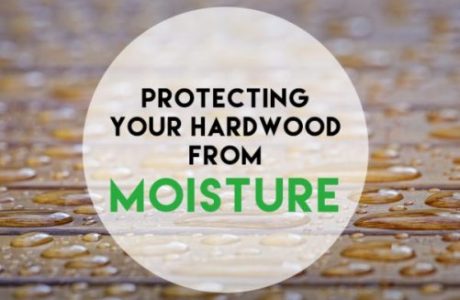
When investing in hardwood flooring, you want to ensure that you are getting everything right the first time. You don’t want to put in a lot of time and money on new hardwood floors only to have them ruined in a few months from buckling. Hardwood flooring experts know that moisture is the #1 enemy of hardwood flooring. That’s why we want to help you do everything you can to avoid ruining your floors with too much moisture.
The easiest way to protect your flooring is to use a moisture barrier. While we do offer professional installation of flooring, some or you who prefer to DIY will benefit from knowing which barriers are applicable to which types of wood floors.
If any of your questions are not answered below, please feel free to ask.
Moisture Barriers for Floating Floors
Floating floor types are those that do not need to be nailed or glued down, such as laminate or tile.
The barriers which work with these types of flooring are typically made from plastic. The plastic is laid down before the flooring is placed on top. As Lumber Liquidators suggests, “use 6 mil poly sheeting plastic as the moisture barrier. Omit plastic when covering bare wood subfloors thereby allowing the subfloor to breathe.”
Since your floating floors will not be nailed or glued down, your barriers do not have to be very thick.
In the case that you have cement subflooring, you should definitely use plastic or paper to protect against the moisture that often accumulates.
For more specific information about your type of flooring, please contact us at Rhodes Hardwood for advice or assistance.
Moisture Barriers for Nailed Floors
In the case of nailed flooring, you will want to install plastic on top of the dirt and under the sub flooring. Then in between the subfloor and new hardwood flooring, you want to apply a felt paper to protect the top layer of flooring. Note that the cost of your moisture barrier for nailed flooring may be higher considering you need to protect both of those layers. Most home improvement stores such as Lowe’s or Home Depot should sell this special felt protective paper, and they should be able to cut it to the length you need.
If you have any questions about installing plastic or felt paper for nailed floors, Please give us a call or email us at Rhodes Hardwood.
Moisture Barriers for Glued Floors
Glued flooring is often installed on top of concrete. Concrete subfloors often gather lots of moisture, especially in humid climates and/or areas where heavy rain is common.
If you are getting ready to install glued floors to concrete, be sure to prepare your project with a HEAVY moisture barrier. These will not only protect your flooring from heavy rain & spills, but will also protect your subfloor from humidity.
A typical barrier for glued flooring is epoxy or resin, which help seal out the moisture.
Again these moisture barriers are available at your local home improvement stores, or Rhodes Hardwood can apply them for you during a hardwood install. According to Lumber Liquidators, “Usually, a trowel applied product is recommended, such as Bostiks MVP or Mapei’s WFM.” There are also ways to DIY the epoxy application.
Regardless of your choice of epoxy application, be sure to give it lots of time to dry before laying your hardwood flooring.
Additional Info
It’s important to note that some flooring comes pre built with moisture barriers , such as certian types of floating flooring.
You can also purchase barriers that have noise absorption and/or insulation features like cork. This can be an important feature for those who may be living in a condo or multi unit residence which may have rules regarding noise. However, please note that too much insulation or padding can be a bad thing, especially if installed incorrectly. If you need any assistance or advice with your hardwood installation or moisture barriers, please ask a professional such as the team at Rhodes Hardwood!
